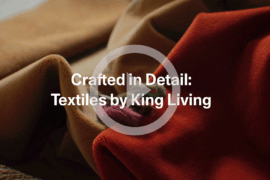Byron George notes the difference between ‘fame’ and ‘recognition’.

January 12th, 2015
Unfortunately, fame and celebrity have become the currency of our time. It’s no longer necessary just to do a really good job, to be known for being really good at your job. You need to be mentioned in magazines and Sunday lift-outs, have your whitened teeth gracing glossy pages offering opinion on what your typical day is, or your favourite way of eating toast. You need to be photographed in your apartment leaning casually against a wall with an artisanal bicycle in the background. Credibility doesn’t come from skill, it comes from being known.
Being known means you are a bankable commodity. People will buy your product. People will buy things you are associated with. Media will follow you not because of what you do, but because consumers of media know who you are and want to associate with you. It means media sells more media. It’s a high school popularity contest on a global scale with big money as the winner.
What is the answer to dealing with a world like that? The obvious answer is PR and marketing. Unfortunately, this is also where greater subtlety is required. Good PR is a fine art, those who do it well are dignified, almost invisible and make people feel good about buying your product. They manage relationships and build brand advocates. Those who do it badly run ram shod over design and individuality in the name of getting that spread. They get a result, but perhaps at the expense of detail, your message, and ultimately your longevity in the market.
Perhaps the most insidious manifestation of this over the last twenty years is the rise of ‘personal branding’. The need for people to express themselves not by being themselves, but by the management of how they appear to other people. You can see how this works for football players and some less than intelligent celebrities, but this kind of thinking is completely toxic to any form of creativity. It’s like expressing your work as being part of a trend, or the design idea being dictated by those who’s job it is to sell it.
The key to a truly sustainable and successful design business is a fundamental understanding of the symbiotic relationship between the creation of ideas and how those ideas are communicated and sold. The best designers are those who know their own minds and are not afraid to explore an idea, no matter how commercially unviable it may seem to the marketing department. The best design firms are those who can harvest this information and build a great story around it. The marketing is there to communicate the idea, not get in the way of creating it.
Byron George and Ryan Russell are co-directors of award-winning architectural studio Russell & George.
This article first appeared in DQ magazine issue 54
INDESIGN is on instagram
Follow @indesignlive
A searchable and comprehensive guide for specifying leading products and their suppliers
Keep up to date with the latest and greatest from our industry BFF's!

Now cooking and entertaining from his minimalist home kitchen designed around Gaggenau’s refined performance, Chef Wu brings professional craft into a calm and well-composed setting.

Merging two hotel identities in one landmark development, Hotel Indigo and Holiday Inn Little Collins capture the spirit of Melbourne through Buchan’s narrative-driven design – elevated by GROHE’s signature craftsmanship.

Timeless design defines Russell & George, a practice that always breaks new ground and leads the pack in design.

In this year’s INDE.Awards, The Retail Space show us that shopping is all about experiential showcases for both products and customers alike. Discover 12 award-worthy examples, right here.
The internet never sleeps! Here's the stuff you might have missed

Merging two hotel identities in one landmark development, Hotel Indigo and Holiday Inn Little Collins capture the spirit of Melbourne through Buchan’s narrative-driven design – elevated by GROHE’s signature craftsmanship.

For a closer look behind the creative process, watch this video interview with Sebastian Nash, where he explores the making of King Living’s textile range – from fibre choices to design intent.